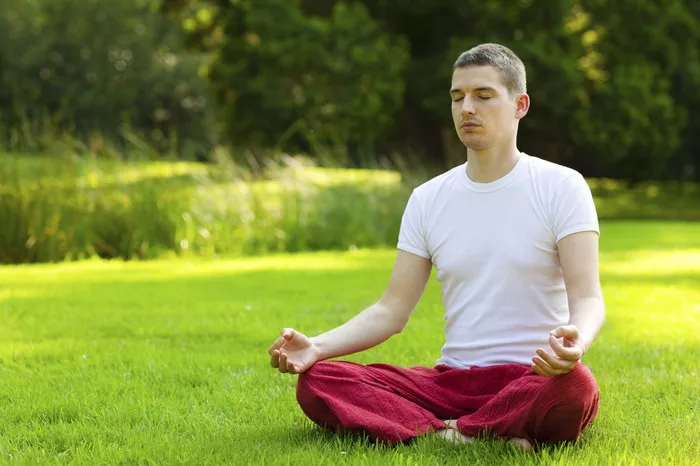Yoga is an ancient practice that has evolved over thousands of years, encompassing numerous styles and techniques aimed at fostering physical, mental, and spiritual well-being. Among these, Kriya Yoga is a profound and transformative system of yoga that has gained prominence due to its association with great spiritual masters and its reputed ability to accelerate spiritual progress. In this article, we will explore the origins of Kriya Yoga, its historical development, its foundational principles, and its impact on modern practitioners.
Where Did Kriya Yoga Come From
Kriya Yoga is often associated with the great yogic master Mahavatar Babaji, an immortal sage who is said to have revived this ancient technique for modern seekers. According to tradition, Babaji imparted the teachings of Kriya Yoga to Lahiri Mahasaya, a 19th-century Indian yogi, who then introduced the practice to his disciples. This lineage continued through Swami Sri Yukteswar and later his disciple, Paramahansa Yogananda, who brought Kriya Yoga to the West.
However, Kriya Yoga’s roots extend far beyond the 19th century. It is believed to be an ancient science of breath and energy control that was practiced by sages in India for thousands of years. The system is closely linked to Raja Yoga, the yoga of meditation, as described by the sage Patanjali in his Yoga Sutras. Some scholars also associate it with Tantra and Kundalini Yoga due to its emphasis on awakening inner energy.
Lahiri Mahasaya and the Revival of Kriya Yoga
Lahiri Mahasaya (1828–1895) is widely credited with reviving and systematizing Kriya Yoga in the modern era. According to accounts, he was initiated into the practice by Mahavatar Babaji during a spiritual encounter in the Himalayan mountains. Babaji instructed Lahiri Mahasaya to make this technique accessible to sincere seekers, regardless of their caste or social status, which was revolutionary at the time.
Lahiri Mahasaya trained many disciples, teaching them the techniques of Kriya Yoga and encouraging them to integrate spiritual practices into their daily lives. He maintained that one did not need to renounce worldly responsibilities to attain enlightenment but could instead practice Kriya Yoga while leading a balanced, engaged life.
Paramahansa Yogananda and the Global Spread of Kriya Yoga
The widespread recognition of Kriya Yoga beyond India is largely due to Paramahansa Yogananda (1893–1952), a direct disciple of Swami Sri Yukteswar. Yogananda traveled to the United States in 1920 and introduced Kriya Yoga to the Western world through his lectures, teachings, and the establishment of the Self-Realization Fellowship.
In 1946, Yogananda published Autobiography of a Yogi, a seminal work that introduced millions to Kriya Yoga. The book recounts Yogananda’s spiritual journey and his encounters with great masters, including Mahavatar Babaji, Lahiri Mahasaya, and Swami Sri Yukteswar. It also provides insights into the philosophy and benefits of Kriya Yoga, making the practice widely known and respected.
Philosophy and Principles of Kriya Yoga
Kriya Yoga is a systematic and scientific approach to spiritual awakening. It is based on the principle that controlling the breath leads to control over the mind and consciousness. The practice involves specific techniques of pranayama (breath control), meditation, and self-discipline to accelerate spiritual growth.
The key principles of Kriya Yoga include:
Breath Control (Pranayama) – The core technique of Kriya Yoga involves controlled breathing exercises that help regulate the life force (prana) within the body. This facilitates inner stillness and deep meditation.
Meditation – Kriya Yoga emphasizes deep meditation to quiet the mind and expand spiritual awareness.
Self-Discipline and Devotion – Practitioners are encouraged to cultivate discipline, devotion to a higher power, and ethical living.
Inner Transformation – By harmonizing body, mind, and spirit, Kriya Yoga promotes a deeper connection with one’s true self.
The Benefits of Practicing Kriya Yoga
Practitioners of Kriya Yoga report a range of benefits, including:
- Increased mental clarity and focus
- A greater sense of inner peace and calm
- Enhanced spiritual awareness and self-realization
- Improved physical health due to better oxygenation and circulation
- Reduction in stress and anxiety
Scientific research on meditation and breath control supports the notion that Kriya Yoga can positively affect mental and physical well-being by reducing stress, improving concentration, and promoting emotional balance.
Modern-Day Practice and Accessibility
Today, Kriya Yoga continues to be taught by various spiritual organizations, including the Self-Realization Fellowship, the Ananda Sangha, and other lineages that trace their teachings back to Lahiri Mahasaya. Initiation into Kriya Yoga traditionally requires a period of preparation, study, and commitment before one receives the techniques from an authorized teacher.
Many practitioners incorporate Kriya Yoga into their daily routines, using it as a means to deepen their spiritual practice and enhance their quality of life. The teachings of Kriya Yoga remain relevant in the modern world, offering a powerful tool for inner transformation amidst the challenges of contemporary life.
Conclusion
Kriya Yoga is a time-honored spiritual practice that originated in the ancient yogic traditions of India. Revived in the 19th century by Mahavatar Babaji and spread worldwide by Lahiri Mahasaya and Paramahansa Yogananda, it has since become one of the most respected and effective paths to spiritual growth. Rooted in breath control, meditation, and self-discipline, Kriya Yoga continues to guide seekers toward inner peace, self-realization, and enlightenment.
For those seeking a deeper connection with their higher self, Kriya Yoga offers a systematic and proven method to achieve spiritual awakening while maintaining a balanced and fulfilling life. Whether practiced in the East or the West, Kriya Yoga remains a profound and transformative journey toward self-discovery and divine union.
Related Topics:













